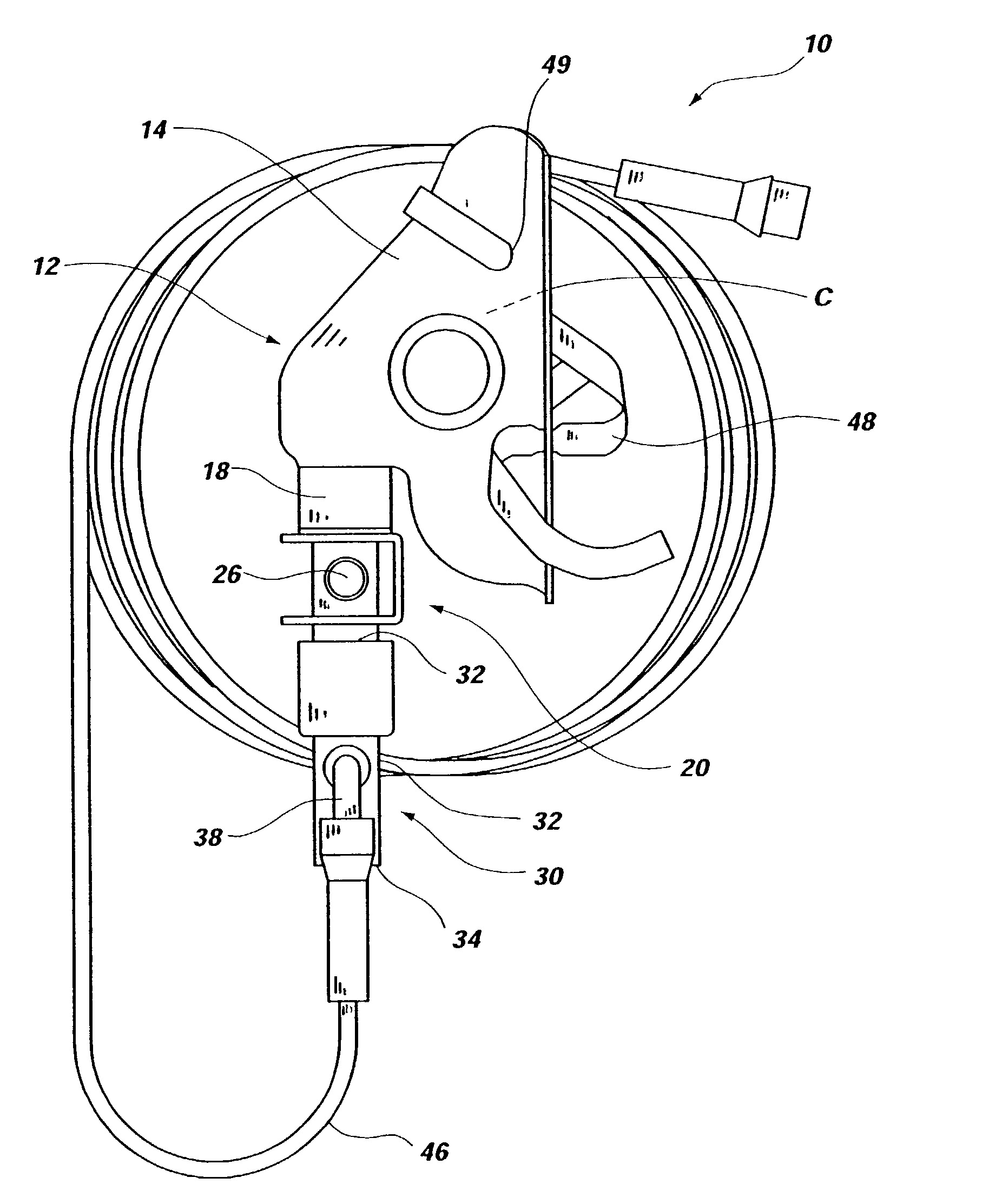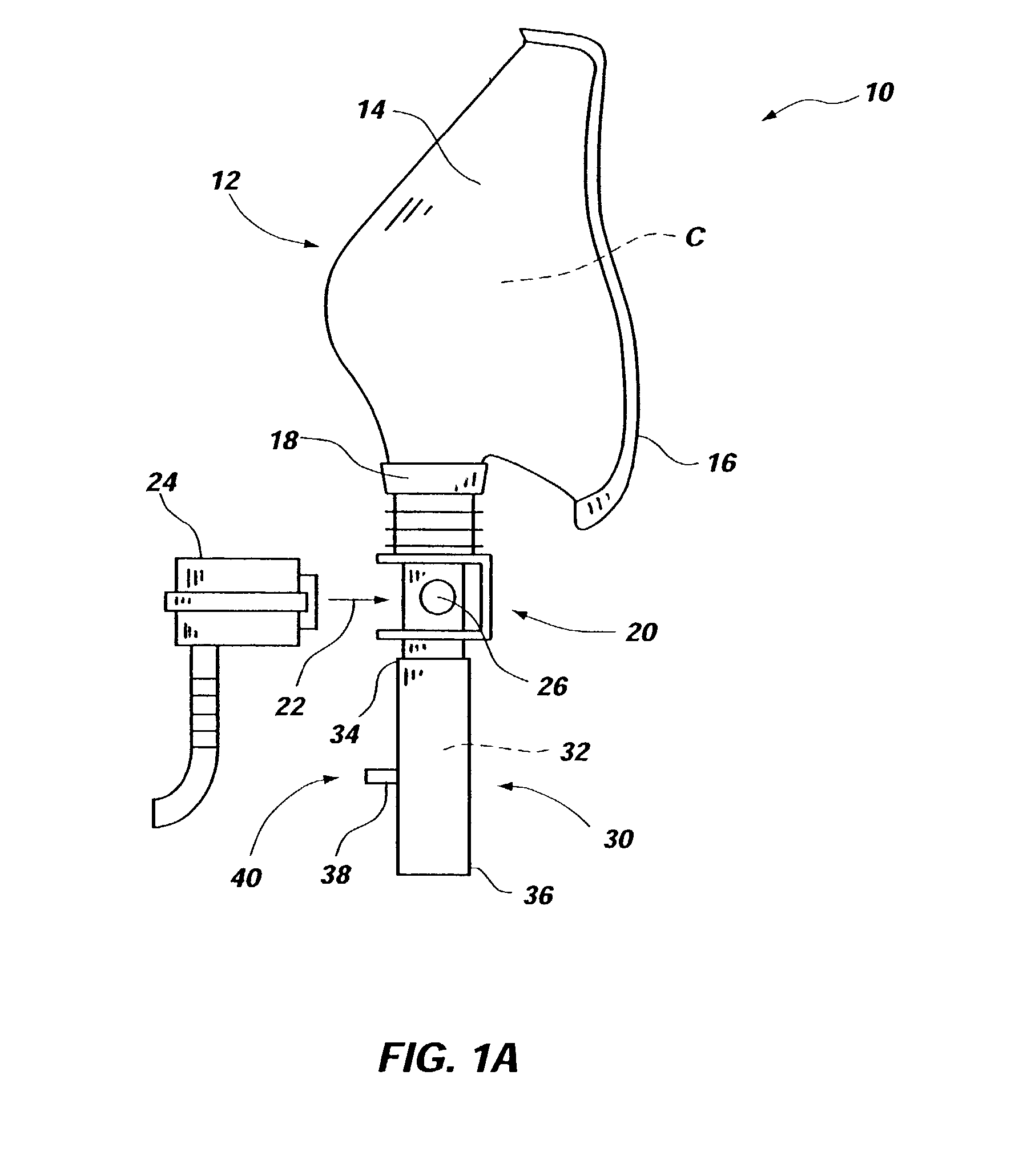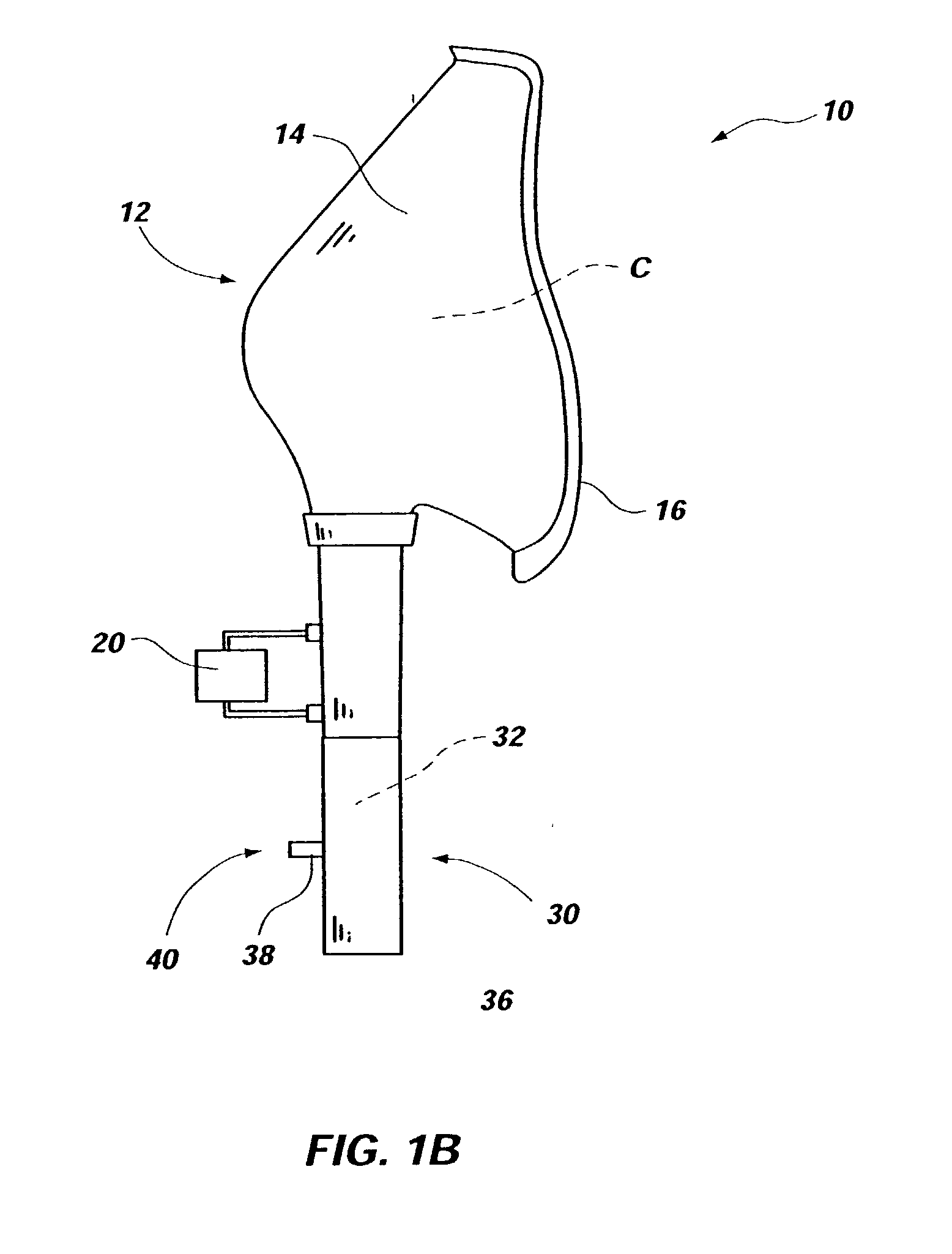Face mask for gas monitoring during supplemental oxygen delivery
a gas monitoring and face mask technology, applied in the direction of instruments, process and machine control, diagnostic recording/measuring, etc., can solve the problems of easy dislocation, irritating the nose, and cannulae including gas monitoring capabilities exhibit a recognized inability to detect oral and nasal gas exchang
- Summary
- Abstract
- Description
- Claims
- Application Information
AI Technical Summary
Benefits of technology
Problems solved by technology
Method used
Image
Examples
Embodiment Construction
[0036] The present invention is directed to a face mask including a gas monitoring capability for improved patient management in combination with improved efficiency of supplemental oxygen delivery to a patient. The particular embodiments described herein are intended in all respects to be illustrative rather than restrictive. Alternative embodiments will become apparent to those of ordinary skill in the art to which the present invention pertains without departing from its scope.
[0037] Referring to the figures in general, and initially to FIGS. 1A, 1B, and 2 in particular, an exemplary embodiment of the face mask assembly according to the present invention is illustrated and denoted generally by reference numeral 10. The illustrated face mask assembly 10 includes a face mask 12 having a sheath or shell 14 defining a chamber C therein bounded by a flexible, compliant peripheral rim 16 for sealing against the face of a patient.
[0038] Face mask 12 further includes a port 18 by which f...
PUM
 Login to View More
Login to View More Abstract
Description
Claims
Application Information
 Login to View More
Login to View More - R&D
- Intellectual Property
- Life Sciences
- Materials
- Tech Scout
- Unparalleled Data Quality
- Higher Quality Content
- 60% Fewer Hallucinations
Browse by: Latest US Patents, China's latest patents, Technical Efficacy Thesaurus, Application Domain, Technology Topic, Popular Technical Reports.
© 2025 PatSnap. All rights reserved.Legal|Privacy policy|Modern Slavery Act Transparency Statement|Sitemap|About US| Contact US: help@patsnap.com



